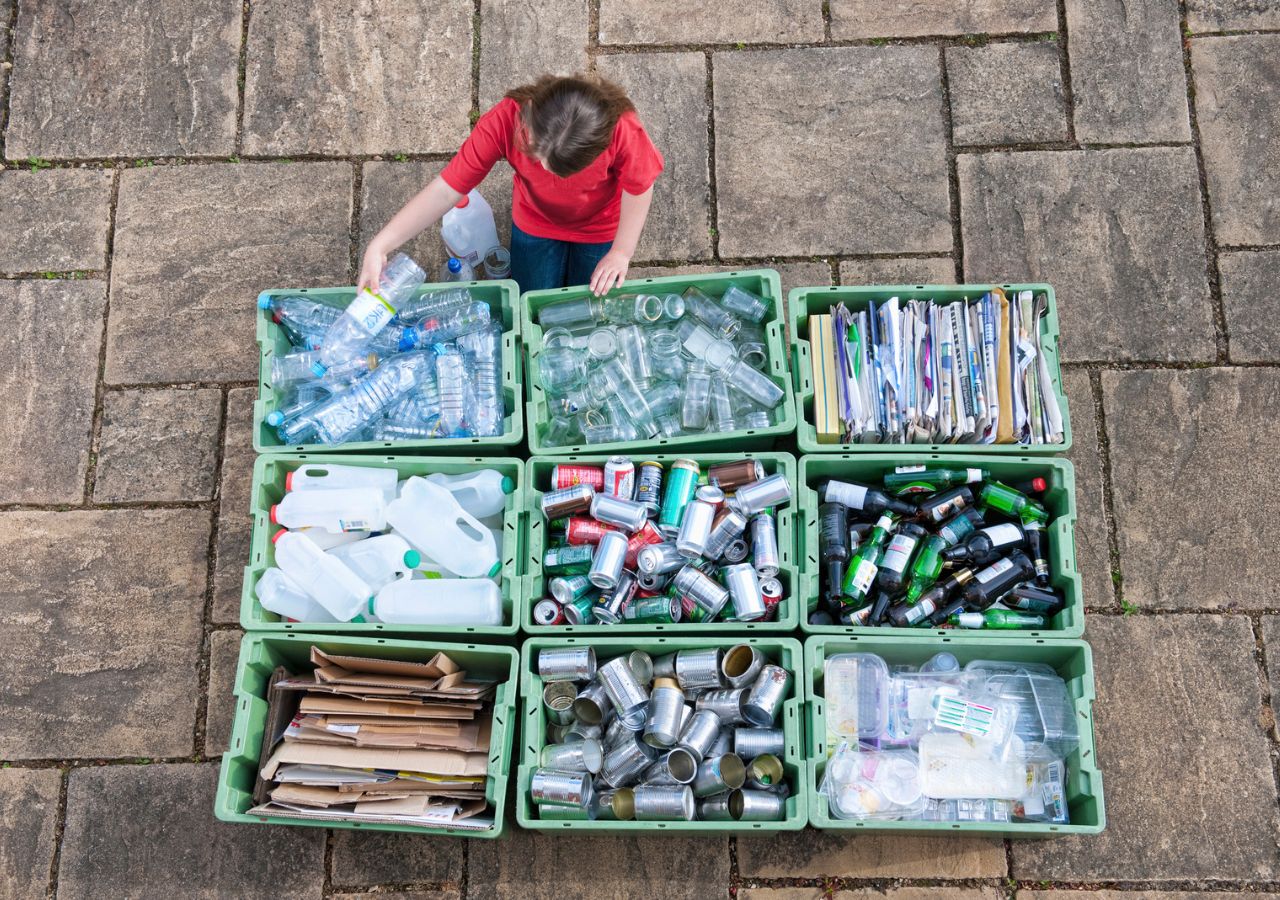Author: Gabriela Aceitón Cortés
More infoIn Europe and as detailed by the European Environment Agency, our waste management is based on the waste hierarchy, which prioritises taking measures to prevent waste generation, followed by preparation for reuse, recycling, and other types of recovery.
These separation systems use a combination of mechanical and manual methods to sort materials into specific categories, such as paper, plastic, glass and metal. They are then subjected to specific recycling processes designed to maximise resource recovery and minimise environmental impact.
Sometimes, we don't realise it, but the next time you walk down the street, look at the rubbish trucks. It might not be what you usually look at in the street, but it will help you understand the following:
As explained by waste management company Derichebourg Groupe, there are trucks that collect an exclusive type of waste, i.e. trucks that are dedicated to collecting exclusively grey container waste or organic waste; and others that are responsible for the blue containers, where paper and cardboard waste is deposited.
There are also mixed trucks that have a box divided in two parts. This allows them to accumulate two different types of waste which are never mixed together, allowing the truck to collect more than one container at a time.

Once collected, different types of waste are not mixed at recycling plants.
As detailed by the Energy and Environment Technology Center in Murcia, Spain, material separation at waste treatment plants involves a series of advanced processes that take advantage of the physical and chemical differences between recyclable materials.
For example, air streams are used to separate lighter materials such as paper and plastic from heavier materials, such as glass and metal. In addition, magnets are used to separate ferrous and non-ferrous materials, thus facilitating their respective recycling.
And while technology plays a key role in separating materials, skilled labour is crucial in recycling. Waste treatment plant operators are trained to identify and manually separate materials that automated machinery cannot efficiently process. This combination of advanced technology and human expertise ensures the accurate and efficient separation of recyclable materials.
Rather than dwelling on the myths that taint people's beliefs, it is important to focus on the benefits of recycling, as detailed by Plastic Recyclers Europe.
Recycling not only helps reduce the amount of waste sent to landfills but also contributes to the conservation of natural resources and the reduction of environmental pollution by reducing the emission of greenhouse gasses associated with producing new materials.
Here are some of the ways recycling helps the environment, just to name a few:
1- It saves CO2 emissions
2- It lowers energy consumption
3- It reduces the use of crude oil
4- It contributes toward a carbon-neutral Europe
Understanding the recycling process empowers us as environmentally conscious citizens, allowing us to differentiate between recyclable and non-recyclable materials and to adopt more sustainable practices in our daily lives.
Despite recycling helping us manage some of our waste efficiently, such as paper, cardboard, or glass, it is not the case for plastic. This synthetic material, manufactured using petroleum as a raw material, has caused significant harm to the environment, especially those classified as single-use plastics.
A recent study by the Center for Climate Integrity has once again placed the oil industry in the dock, providing evidence of decades of deceptive marketing to promote plastic recycling "despite their long-standing knowledge that is not technically or economically viable at scale," they remark.
The report titled “The Fraud of Plastic Recycling” explains that we can use two types of processes for recycling plastics:
1- Mechanical, which recovers plastic waste through processes that include sorting, washing, grinding, melting, and reprocessing in order to form a new plastic product.
2- Advanced or chemical recycling, which breaks plastics into chemical components using heat or solvents. While some yield recyclable materials, most generate waste or fuel, not qualifying as true recycling.
It is important to re-consider our plastics consumption with some key facts in mind: 99% of plastics are derived from fossil fuels. This implies that the capacity to recycle plastics is limited, also considering that only a few types of plastics – specifically polyethylene terephthalate (PET) and high-density polyethylene (HDPE) – have viable markets for recycling.

The challenge in recycling plastics stems from the vast array of plastics with different chemical compositions, necessitating precise sorting in facilities. Recycled plastic quality diminishes with time, limiting practicality and recyclability.
In this sense, it’s worth asking ourselves: would it be better to focus on the impact of overconsumption rather than the packaging itself?
Before throwing something into its corresponding container, we should consider some "previous steps". Firstly, reduce the consumption of superfluous packaging. If we can't avoid this, try to find a second or third life for them after that first use and, finally, take them to the (correct) recycling bin!
We need to trust the science and technology. There are advanced waste collection and separation systems that guarantee the efficiency and effectiveness of the recycling process. It’s crucial to understand how they work and recognise their importance in preserving the environment for future generations.
Sources
Collaborators
Organizations

Communications
Inmedia Solutions